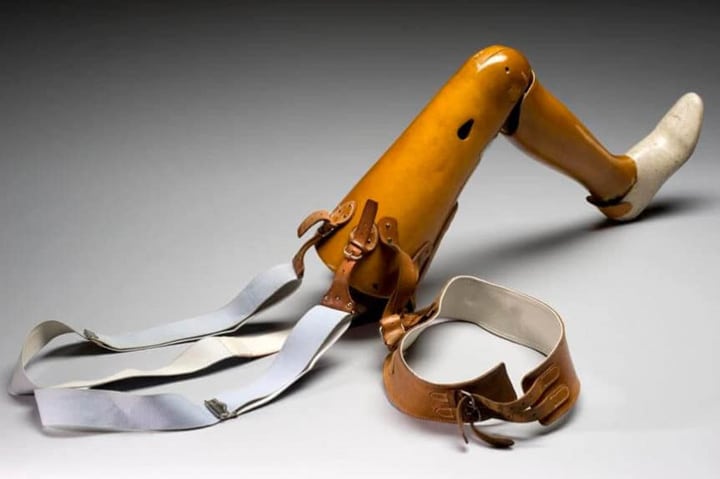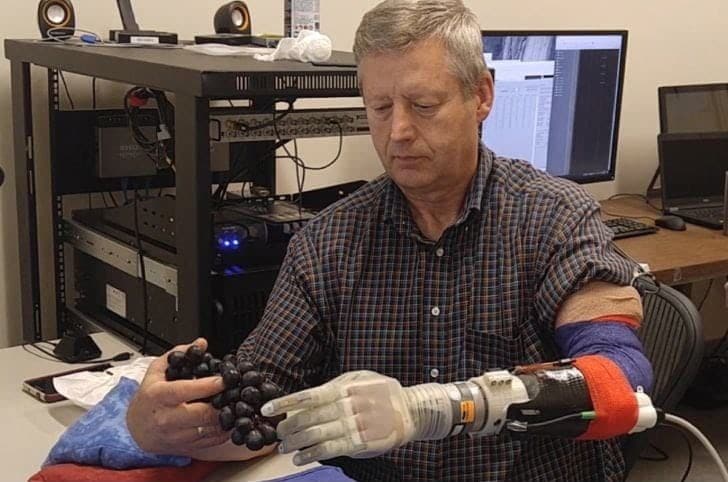Created 01/2020
Introduction
One question we often get at the Amputee Coalition is how and when to use the terms prosthetics and prosthesis properly. Read the definitions below, and also learn some basics about the field of prosthetics.
What is the difference between prosthetics and prosthesis?
- Prosthetics refers to the field of research and expertise in designing and building artificial limbs. Prosthetic can also be used as an adjective as well (example: prosthetic limbs).
- Prosthesis is the most accurate term for an artificial device that is built to replace a missing body part. The plural of prosthesis is prostheses. Prostheses are worn both by those who lost limbs due to disease or trauma, and also those who were born with congenital limb difference. A person who is an expert in prostheses and their use is called a
Learn More About Prosthetics
Prosthetics is an ever-expanding field with amazing strides in technology and design made in the past few decades alone.
The History of Prosthetics
We know of a few examples of prostheses worn in ancient times since we have only a few surviving artifacts. Before the age of modern medicine, the survival rates for amputation and related diseases would have been low. However, archaeologists have uncovered artificial toes in Ancient Egypt dating back as early as 1295 B.C.
Early prostheses were heavy and made of wood, but today’s lighter materials allow for devices that much more closely match the function of a biological limb.
Learn more about the history of prosthetics in History of Prosthetic Legs Throughout The Ages

Image: Science Museum Group
Types of Prosthetic Devices
Today, there is a range of prostheses available for both upper and lower limb amputees. The type of prosthesis worn depends on the level of limb loss, and there are many different styles and technologies available.
Prosthetics need to be tailored to the individual by working with a prosthetist. This professional will help develop a custom prosthetic socket-the piece that connects the prosthesis to the body. The socket is specially fitted to be snug with the residual limb-the part of a limb that remains after amputation.
Leg prostheses can be built for both above-knee (transfemoral) amputees and below-knee (transtibial) amputees. Arm prostheses are built for above-elbow (transhumeral) and below-elbow (transradial) amputees.
There are various designs, materials, joint types and technologies used in modern prostheses. Be sure to also read our Beginner’s Guide to Common Types of Prosthetic Limbs.
Neuroprosthetics: Artificial Limbs Controlled by the Brain
Neuroprosthetics refers to the field of research into controlling artificial limbs and other devices using the human brain, and in many cases, allow the device to send signals back to the brain. This field is still in its infancy but expanding rapidly, with many successful trials pointing to a future where artificial limbs are nearly indistinguishable from biological ones.
Learn more about this exciting field in our post on Neuroprosthetic Limbs: Exploring the Future of Prosthetics

Image: Digital Trends
Get More Prosthetic Information From Amputee Coalition
At Amputee Coalition, our mission is to reach out to and empower people affected by limb loss to achieve their full potential through education, support, and advocacy, and to promote limb loss prevention. We provide free resources and access to our support network for those undergoing limb loss and their families so no one goes through limb loss alone.
If you or a loved one have undergone or will soon undergo amputation, reach out to one of our Information and Referral Specialists to learn how we can help.
It is not the intention of the Amputee Coalition to provide specific medical or legal advice but rather to provide consumers with information to better understand their health and healthcare issues. The Amputee Coalition does not endorse any specific treatment, technology, company, service or device. Consumers are urged to consult with their healthcare providers for specific medical advice or before making any purchasing decisions involving their care.
© Amputee Coalition. Local reproduction for use by Amputee Coalition constituents is permitted as long as this copyright information is included. Organizations or individuals wishing to reprint this article in other publications, including other websites must contact the Amputee Coalition for permission to do so, by emailing a request to rc@amputee-coalition.org.



